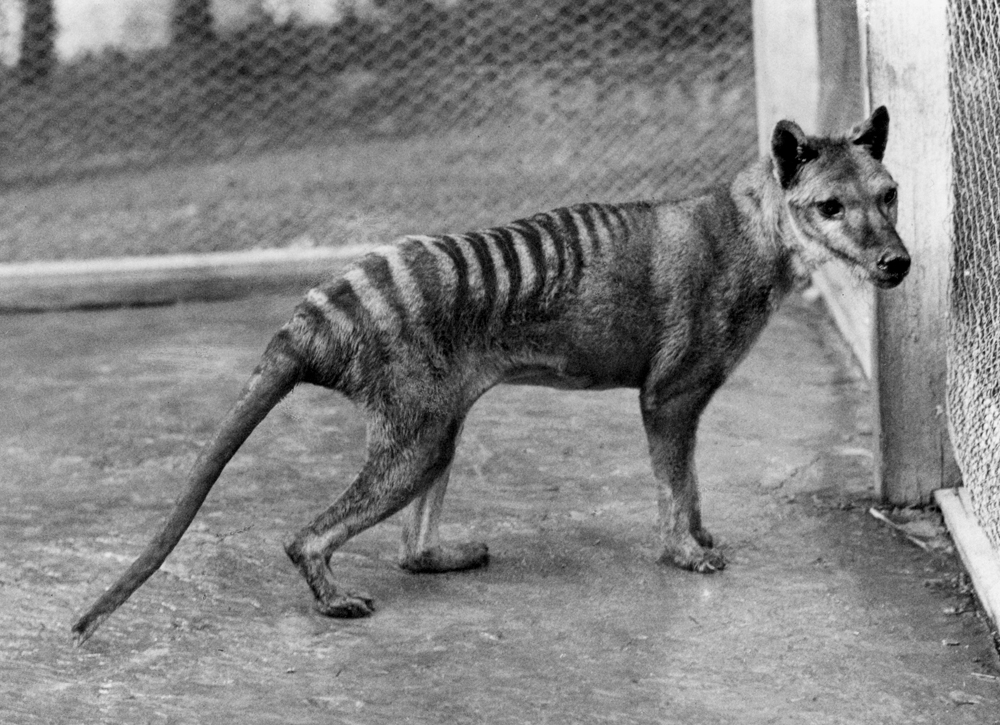Humans Alone Wiped Out Tasmanian Tiger, Study Says

Humans alone were responsible for the Tasmanian tiger's extinction in the 20th century, according to a new study that shoots down claims that disease also doomed the meat-eating marsupial.
More officially known as thylacines, Tasmanian tigers (Thylacinus cynocephalus) looked somewhat like striped coyotes and were found throughout most of the Australian island of Tasmania before Europeans settled there in 1803.
Starting at the end of the 19th century, the Tasmanian government paid bounties for thylacine carcasses, as the animals were believed to prey on farmers' sheep and poultry. (A recent study, however, showed that the carnivores' jaws were so weak they likely couldn't have taken down anything larger than a possum.) Humans eventually hunted thylacines to extinction in the early 1900s; the last known individual died in a Tasmanian zoo in 1936.
"Many people, however, believe that bounty hunting alone could not have driven the thylacine extinct and therefore claim that an unknown disease epidemic must have been responsible," researcher Thomas Prowse, of Australia's University of Adelaide, said in a statement.
Prowse and his colleagues developed a mathematical model to evaluate whether the combined impacts of Europeans' settlement could have wiped out the thylacine, without any disease involved.
"The new model simulated the directs effects of bounty hunting and habitat loss and, importantly, also considered the indirect effects of a reduction in the thylacine's prey (kangaroos and wallabies) due to human harvesting and competition from millions of introduced sheep," Prowse said.
Indeed, their results, published this month in the Journal of Animal Ecology, showed that these impacts alone would have been powerful enough to send the Tasmanian tiger population crashing in the early 20th century.
Get the world’s most fascinating discoveries delivered straight to your inbox.
A study out last year suggested that low genetic diversity eventually would have set the thylacine on a path to extinction even if they hadn't been hunted off the planet.
The tiger's extant cousin, the Tasmanian devil, is currently being wiped out by a contagious cancer that's been able to spread all the easier because of the devil's low genetic diversity, which cuts down a wildlife population's ability to adapt to changing environmental conditions and bounce back from disease and mass fatalities. The Tasmanian tiger, if around today, also would be exceptionally susceptible to diseases, those researchers said.
Follow LiveScience on Twitter @livescience. We're also on Facebook & Google+.



